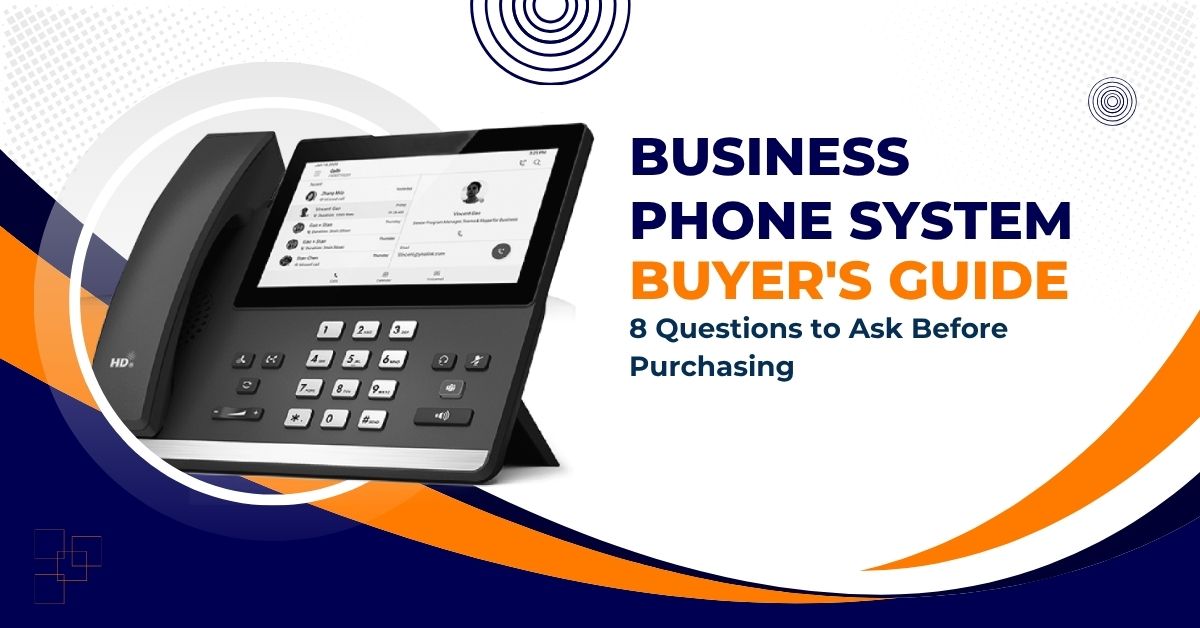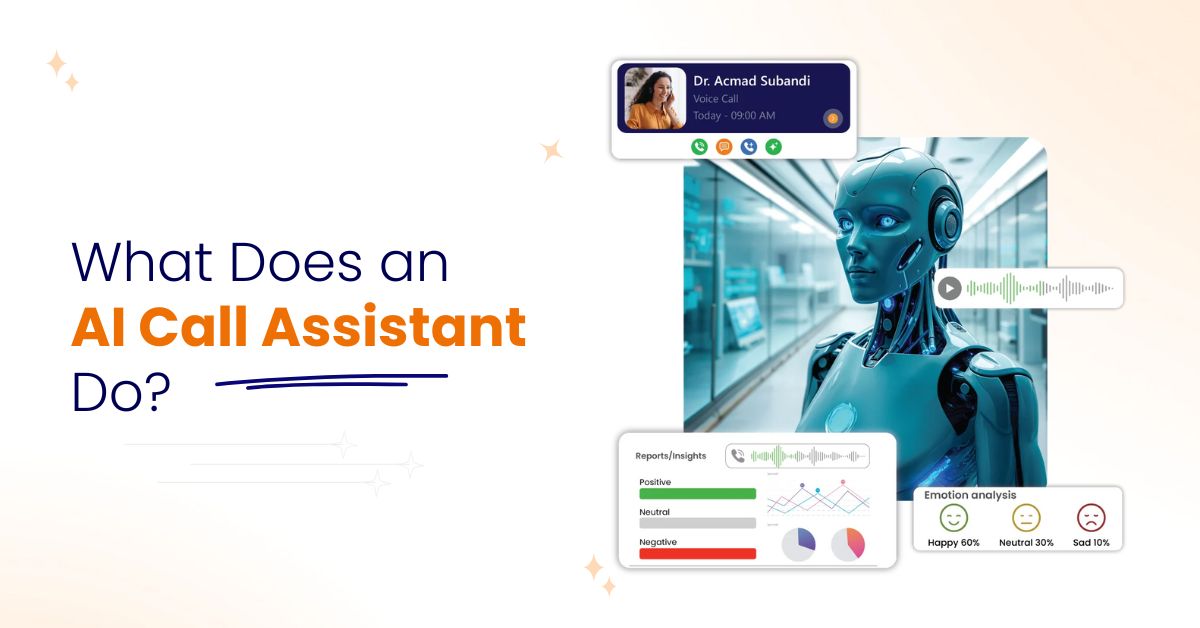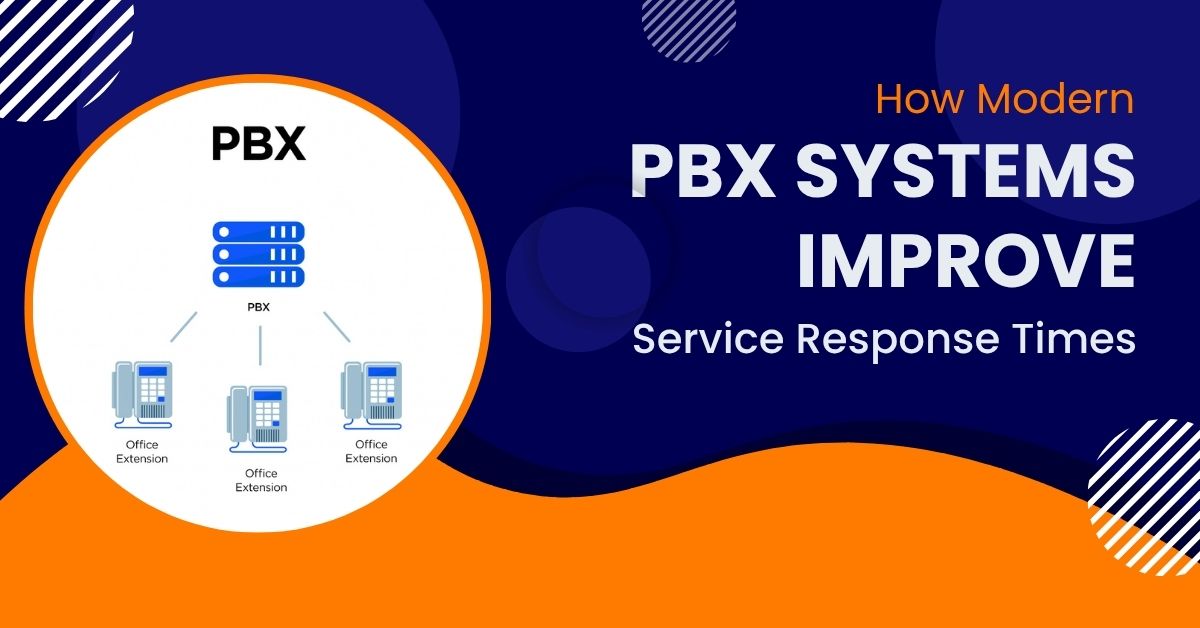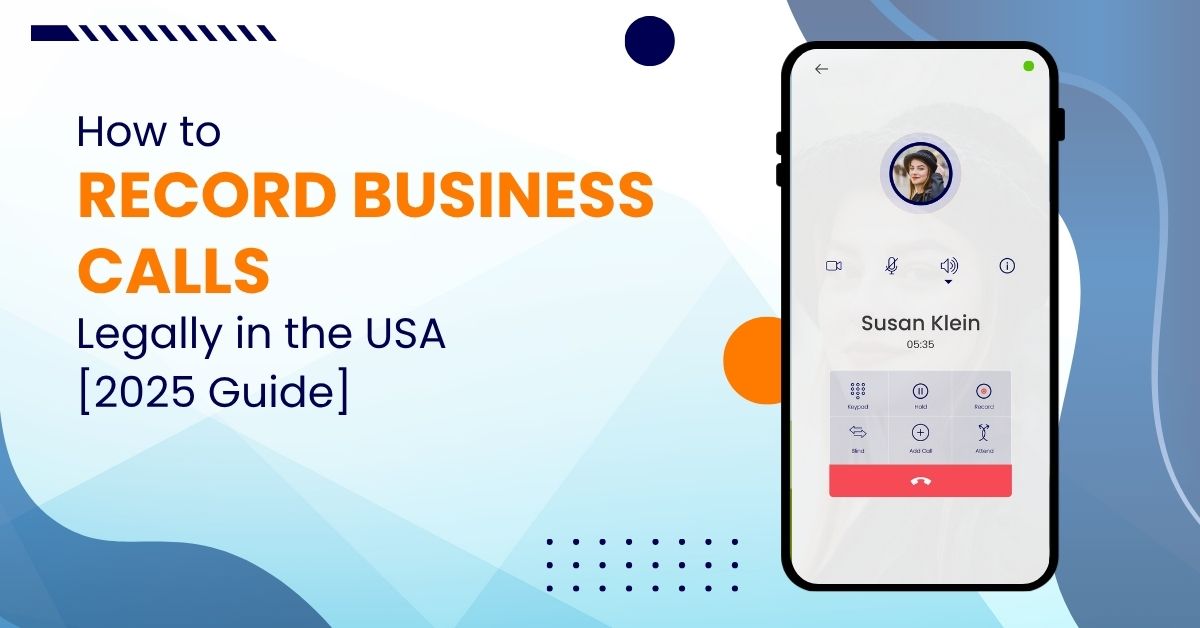Understanding Customer Service vs Customer Support in Today’s Business World

10 min read
Table of Contents
Ever waited on hold for help and thought, “Isn’t this customer service?”Not always.
While the terms sound interchangeable, customer service and customer support actually play different roles in your business. Understanding the terms customer service and customer support—and the distinctions between them—is crucial for delivering an effective customer experience.
- Customer service is about building relationships, guiding customers, and adding value before and after a sale.
- Customer support focuses on solving problems when something goes wrong—like technical glitches or account issues.
Both matter. Together, they create the kind of experience that turns one-time buyers into loyal fans. According to Microsoft’s Global Customer Service Report, 90% of Americans consider service quality before choosing a brand.
Let’s simplify this difference—and show how getting it right can make your business stronger.
Customer Service and Customer Support: The Foundation of Experience
Customer service and customer support are the two sides of customer experience. Service builds trust. Support restores confidence.
When they work together, customers feel understood, valued, and cared for. Aligning both functions is essential for developing a customer-centric strategy that prioritizes customer needs and loyalty. And in today’s world, where competition is only a click away, how you treat people matters as much as what you sell.
What Is Customer Service?
Customer service refers to the human touch behind every great brand. It’s about more than answering questions—it’s about understanding people.
Customer service teams guide, educate, and support customers through their journey—from curiosity to purchase to long-term loyalty. The main customer service aims are to improve the customer experience, build trust, and add as much value as possible at every stage of the customer journey.
Example:
Walk into an Apple Store. A team member greets you, answers your questions, and even shows you hidden features you didn’t know existed. That’s customer service—proactive, personal, and genuine. This approach ensures customers receive as much value as possible from their experience, maximizing the benefits of their purchase.
According to HubSpot, 93% of customers are more likely to make repeat purchases from companies with great service.
Core Traits of Excellent Customer Service
- Friendly, proactive communication
- Guiding customers, not just reacting to them
- Personalizing help across every channel
- Building long-term relationships, not just transactions
- Turning happy customers into brand advocates
Discover how Vitel Global’s Unified Communication Solutions empower teams to deliver seamless, personalized service from anywhere.
What Is Customer Support?
Customer support refers to the technical backbone of a great customer experience, focusing on assisting customers with product or service problems, especially technical issues.
It’s the team that steps in when something doesn’t work as expected—troubleshooting issues, diagnosing bugs, or fixing system errors. Technical support is a key component of customer support, dedicated to resolving technical problems efficiently and ensuring smooth operation for users. The customer support team brings expertise in handling technical issues and provides reliable assistance to enhance customer satisfaction and confidence.
Support is reactive by design, but it’s also essential for customer confidence. When done right, it transforms frustration into relief.
Core Traits of Excellent Customer Support
- Deep technical knowledge
- Fast, structured problem-solving
- Clear communication during complex issues
- Use of tools like ticketing systems and live chat
- A focus on quick resolution and user satisfaction
In short:
Customer service asks, “How can I make this better?”
Customer support says, “Let’s fix this now.”
Customer Service vs Customer Support: A Quick Comparison
Aspect
Customer Service
Customer Support
Purpose
Builds relationships & loyalty
Fixes technical issues
Approach
Proactive & empathetic
Reactive & analytical
Skills
Communication, patience
Product expertise, diagnostics
When It Happens
Throughout the customer journey
When issues arise
Goal
Create satisfaction & trust
Resolve problems efficiently
KPIs
CSAT, NPS, Retention
FCR, Resolution Time
Example
“Which plan is right for me?”
“My account isn’t syncing.”
This table highlights the key differences between customer service and customer support, showing how each plays a distinct but vital role in addressing customer needs. Both customer support and customer service are essential for meeting customer needs and ensuring a positive experience throughout the customer journey.
When both teams work hand-in-hand, customers don’t just get help—they get confidence. Support and customer service complement each other by combining technical problem-solving with relationship building, enhancing the overall customer experience.
Why the Difference Matters
For years, companies grouped both functions under “customer service.” But today’s customers expect personalization, empathy, and instant help.
According to Zendesk’s CX Trends Report:
- 76% expect personalization in every interaction
- 61% switch brands after a single bad experience
- 74% say feeling valued keeps them loyal
Knowing the difference between service and support helps businesses balance both empathy and efficiency—creating experiences people remember for the right reasons. This balance is essential for delivering a positive customer experience, which leads to greater customer satisfaction and long-term loyalty.
How They Work Together
| Function | Focus | Customer Feeling |
| Service | Empathy & care | “They care about me.” |
| Support | Technical expertise | “They know how to fix it.” |
People might forget the issue—but they’ll always remember how you made them feel.
Customer Experience: The Heart of Loyalty
Every interaction adds up to a bigger story—the customer experience (CX).
A fast fix means little if the conversation feels cold. A warm tone falls flat if the problem remains unsolved.
Service brings the heart; support brings the logic. Together, they create trust that lasts. Practicing empathy and understanding customer emotions is essential for building a human-centered customer experience, making each interaction more personal and effective. The ultimate goal is to deliver an exceptional customer experience that fosters loyalty and long-term relationships.
The People Behind the Experience
Customer Service Representatives (CSRs)
CSRs are the frontline voices of your brand. They answer questions, solve small issues, and build emotional connections.
A great CSR listens first, speaks with empathy, and makes customers feel seen and heard.
Customer Support Agents
Support agents are your technical problem-solvers. They diagnose, fix, and prevent issues that could affect performance. The support team brings technical expertise and works collaboratively to resolve customer issues efficiently. Support teams coordinate to provide both proactive and reactive assistance, ensuring that customer needs are addressed promptly. Customer support teams play a crucial role in delivering efficient technical support and enhancing overall customer satisfaction.
When both teams collaborate, customers experience a journey that’s both human and hassle-free.
What Great Customer Service Looks Like
Exceptional service is anticipating needs before customers ask. Good customer service plays a crucial role in fostering customer loyalty and satisfaction, directly impacting long-term business success. Providing exceptional customer service helps build a positive reputation, attract new customers, and drive growth through positive word-of-mouth. Delivering great customer service means not only meeting but exceeding expectations, ensuring every interaction enhances the overall customer experience.
Best Practices
- Listen before offering solutions
- Personalize every response
- Teach customers; don’t just tell them
- Follow up to confirm satisfaction
PwC reports: 73% of consumers say great experiences drive loyalty—but only half think brands deliver them.
What Great Customer Support Looks Like
World-class support combines technical expertise with a human touch. Good customer support is essential for resolving customer issues and building trust with clients. Addressing customer issues quickly and effectively is key to ensuring customer satisfaction and loyalty. Efficient resolution of any technical issue demonstrates a commitment to delivering world-class support and maintaining a positive customer experience.
Best Practices
- Use clear triage systems for faster response
- Empower customers through knowledge bases
- Keep communication real and transparent
- Leverage AI to predict issues early
- Track data weekly for continuous improvement
McKinsey found that automation reduces resolution times by 40% and cuts costs by 35%.
The Pillars of Exceptional Service and Support
- Customer-Centric Mindset
Always design processes around customer needs. - Effective Communication
Be clear, consistent, and compassionate. - Seamless Experience
Make every interaction smooth—no repeating, no confusion.
Customer service encompasses all the processes, values, and interactions involved in engaging with customers, setting it apart from customer support, which focuses on resolving technical issues. These pillars transform service from a task into an experience customers actually enjoy.
Why Feedback Fuels Retention
Feedback is gold. Listening to customers—and acting on their input—creates loyalty. It’s essential to have processes in place to ensure customers provide feedback through channels like reviews, surveys, forums, and social media. Documenting customer feedback as part of a standardized support process helps maintain a consistent customer service philosophy and drives continuous improvement.
When people see that their voice matters, they stay. This feedback loop helps improve both service quality and product performance over time.
How to Keep Improving
- Invest in continuous training
- Use technology to assist, not replace, human agents
- Make customer feedback part of every decision
- Personalize every interaction
Consider creating a customer service playbook to standardize processes, document best practices, and ensure consistency in customer interactions.
Improvement isn’t a project—it’s a habit. And it’s what keeps good companies great.
Measuring Success
Numbers matter—but meaning matters more. Track the key metrics, but don’t forget the feelings behind them.
Top Metrics
- Customer Satisfaction Score (CSAT): Measures how satisfied customers feel after an interaction
- First Contact Resolution (FCR): Tracks how often issues are resolved in a single interaction, a key indicator of support effectiveness
- Customer Effort Score (CES): Evaluates how easy it is for customers to get help and resolve their issues
- NPS: How likely customers are to recommend you
When numbers and emotions align, you know you’re doing it right.
How Technology Elevates Experience
Technology now helps teams scale empathy.
- Customer relationship management (CRM) tools track and record every touchpoint, logging all customer interactions to enable personalized support and more effective customer service.
- Logging and analyzing customer interactions is essential to personalize service and improve first-contact resolution.
- Chatbots handle simple questions instantly.
- AI predicts what customers might need next.
Salesforce reports: 88% of service professionals say automation lets them focus on meaningful conversations.
At Vitel Global, our communication platforms combine automation and empathy—so every conversation feels human, even at scale.
Real Customer Voices
“I don’t mind waiting—as long as someone keeps me updated.” — Melissa, Small Business Owner
“Support is about speed. Service is about care.” — Aditya, IT Professional
“A chatbot fixed my issue, but the follow-up call made me feel valued.” — Diana, Customer Success Manager
Technology fixes problems. People create loyalty.
Industry Examples of Excellent Customer Service and Support
Across industries, some companies have become synonymous with exceptional customer service and support—setting the bar for what a seamless customer experience should look like.
Take Amazon, for example. Their commitment to customer support is legendary, with fast, hassle-free returns, 24/7 assistance, and a focus on making every interaction as easy as possible. This dedication to delivering exceptional customer service has helped Amazon foster deep customer loyalty and set expectations for the entire e-commerce industry.
In the tech world, Apple’s Genius Bar is a standout example of excellent customer support. Customers receive expert technical assistance in-store, with support agents who not only resolve technical issues but also provide personalized support tailored to each user’s needs. This approach transforms what could be a frustrating technical problem into a positive, confidence-building experience.
The hospitality industry also offers powerful lessons. Brands like Ritz-Carlton and Four Seasons are renowned for delivering exceptional customer service by anticipating guest needs and personalizing every interaction. Their teams are empowered to go above and beyond, ensuring that every guest feels valued and cared for—turning one-time visitors into lifelong advocates.
What do these industry leaders have in common? They invest in both customer service and support, train their teams to deliver personalized support, and use every customer interaction as an opportunity to build strong customer relationships. By studying their strategies, businesses in any sector can learn how to create excellent customer service and support experiences that drive loyalty, retention, and growth.
Common Mistakes in Customer Service and Support
Even the most well-intentioned businesses can stumble when it comes to customer service and support. One of the most common pitfalls is slow or ineffective responses to customer inquiries. When customers are left waiting or receive incomplete answers, it leads to customer frustration and erodes trust in your brand.
Another frequent mistake is failing to understand and address individual customer needs. Without personalized support, customer service teams risk missing the mark on customer expectations, resulting in a generic experience that doesn’t foster loyalty or satisfaction.
Consistency is also key. Many businesses struggle to deliver the same level of service and support across all channels—whether it’s phone, email, chat, or social media. This inconsistency can confuse customers and make it harder to resolve issues efficiently.
A lack of investment in training and empowering customer service agents is another major misstep. Without the right technical skills and authority to solve problems, even the most dedicated customer service representatives can’t deliver exceptional customer experiences. This can lead to unresolved issues, lower customer satisfaction, and ultimately, lost business.
To avoid these mistakes, companies should prioritize ongoing training for their customer service team, invest in the right customer service tools, and create clear processes for handling customer inquiries. By focusing on delivering exceptional customer experiences at every touchpoint, businesses can exceed customer expectations, reduce customer frustration, and build lasting loyalty.
The Power of Uniting Both
When service and support work as one, you get:
- Faster resolutions
- Happier customers
- Stronger reputation
- Continuous improvement
This unified approach drives higher customer retention and helps foster customer loyalty by delivering consistent, high-quality experiences at every touchpoint.
See how Vitel Global’s Contact Center Solutions help businesses combine AI, analytics, and empathy for smarter customer experiences.
How AI Is Changing the Game
AI doesn’t replace people—it empowers them. It predicts customer intent, detects sentiment, and drafts human-sounding responses. AI also enhances customer support interactions by providing quick, accurate responses and tracking outcomes, ensuring technical issues are resolved efficiently.
How It Helps
- Chatbots resolve 60% of routine issues
- Predictive analytics catch problems early
- Voice AI summarizes customer calls
- AI efficiently manages customer inquiries and routes them to the right team
AI can also help manage customer support deals and agreements as part of a broader customer experience strategy, ensuring that support is both proactive and aligned with organizational goals.
Automation adds speed. Humans add heart. The best brands balance both.
Common Misconceptions
- “Service and support are the same.” → Support is one part of service.
- “Only big companies need service teams.” → Every customer deserves care.
- “AI replaces agents.” → It supports them.
- “Service starts after a sale.” → It starts with the first hello.
Top companies know: great service never ends—it evolves.
Final Thoughts
Customer service builds relationships. Customer support solves problems. Together, they shape how customers feel about your brand—long after the issue is resolved.
In a competitive world, fixing problems isn’t enough. You have to be careful while fixing them.
If you want to deliver faster, smarter, and more human experiences, explore Vitel Global’s AI-Powered Business Communication Solutions.
Because in 2025 and beyond, the future of great technology begins with great service.
Serve better, connect deeper, and grow faster with Vitel Global.
Frequently Asked Questions (FAQs)
1. What is the difference between customer service and customer support?
Customer service covers all the ways a business helps customers throughout their entire journey, focusing on building strong relationships and making sure customers are happy. Customer support is a part of customer service that specifically helps with technical problems and product-related questions.
2. Why are both customer service and customer support important?
Both are key to giving customers a smooth and positive experience. Customer service builds trust and loyalty by proactively answering questions and meeting needs, while customer support quickly fixes technical issues to reduce frustration and downtime.
3. What skills are essential for customer service teams?
Great customer service requires good communication, empathy, patience, problem-solving, and the ability to tailor help to each customer. These skills help create satisfied customers and strong connections.
4. When should customers contact customer support?
Customers usually reach out to customer support when they have technical problems, product malfunctions, or need help troubleshooting issues with a company’s products or services.
4. How does customer service impact the customer lifecycle?
Customer service is involved at every stage—from before a purchase to after—making sure customers get value and guidance throughout their experience.
5. What are common customer service activities?
Typical tasks include answering questions, sharing product information, guiding customers through processes, resolving complaints, and following up to ensure satisfaction.
6. How can businesses improve customer satisfaction through service and support?
By giving their teams the right tools, training them in both technical and people skills, and focusing on the customer’s needs, businesses can respond faster, solve problems efficiently, and provide personalized experiences that boost satisfaction.
7. What role does technology play in customer service and support?
Tools like customer relationship management (CRM) systems, AI chatbots, and platforms that connect multiple communication channels help manage customer questions, enable personalized help, and improve how quickly issues get resolved.
8. Can a business have customer service without customer support?
Yes. Some businesses, especially those without technical products, may only need customer service without a dedicated customer support team.
9. How do customer service and customer support teams collaborate?
When they work well together, support teams handle technical problems while service teams build relationships and communicate proactively. Together, they ensure customers get smooth, effective help every time.
Published: November 5th, 2025
Subscribe to Our Latest Updates
Get monthly product and feature updates, the latest industry news, and more!









